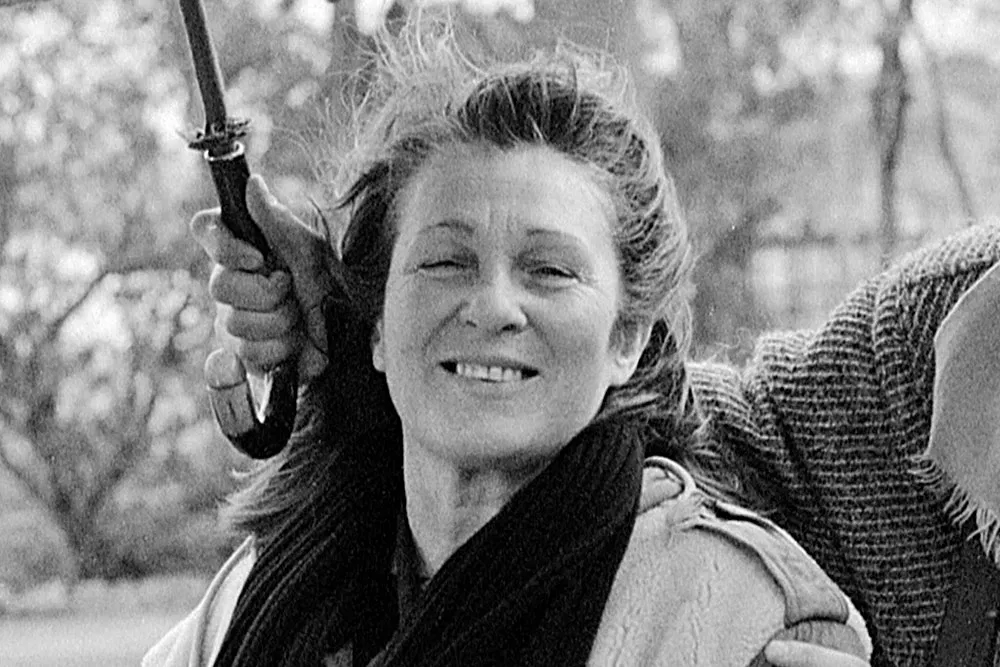
Letizia Battaglia (1935–2022) was an Italian photojournalist whose stark and haunting images of Mafia violence in Sicily captured the world’s attention. With her camera, Battaglia documented not only the brutal crimes committed by the Mafia but also the deep cultural and social wounds left in their wake. Her work goes beyond photography, serving as a testament to courage, resilience, and an unrelenting search for truth in the face of fear and intimidation.
Letizia Battaglia was born on March 5, 1935, in Palermo, Sicily. Raised in a conservative, patriarchal society, she often felt constrained by the limitations placed on women of her time. After an early marriage and three daughters, Battaglia sought personal freedom and a career outside the confines of traditional roles. In her 30s, she began working as a journalist for the newspaper *L’Ora*, one of the few publications in Sicily that dared to investigate and expose Mafia activity.
It was during her time at L’Ora that Battaglia first picked up a camera. What began as a practical necessity—providing photographs to accompany her articles—soon developed into a passion that would define her career.
For over two decades, Battaglia photographed the violent aftermath of Mafia crimes, capturing the harsh reality of life in Sicily. Her images are raw and unflinching, often depicting murder victims, grieving families, and moments of silent devastation. These photographs are more than mere documentation; they are powerful statements on the cost of organized crime and the impact it has on communities.
Battaglia’s photographs stand out for their emotional depth and storytelling power. Some of her most iconic images include:
The Girl with the Soccer Ball (1980): This haunting photograph shows an innocent young girl standing in front of a bullet-riddled wall, juxtaposing childhood innocence with the surrounding violence.
Funerals and Grief: Battaglia captured countless images of Sicilian funerals, each one a somber reflection of the community’s enduring pain.
Crime Scenes: Her photos of bodies lying in the streets, victims of Mafia assassinations, are chilling reminders of the harsh reality Sicilians faced daily.
Unlike many war photographers who capture violence from afar, Battaglia was deeply connected to her subjects. She once said, “I photographed to denounce, to not forget, to say, Look at this!” Her work was as much an act of defiance as it was of documentation.
While Battaglia is best known for her Mafia photographs, her body of work extends far beyond crime scenes. She was passionate about documenting the lives of Sicilian women, children, and the marginalized, portraying them with compassion and dignity. Her portraits often reveal moments of strength, vulnerability, and resilience.
Battaglia’s photography frequently focused on women as symbols of resistance and hope in a society dominated by male power structures. She believed that her work could inspire change and give a voice to those who were often silenced.
Letizia Battaglia’s work earned her international acclaim. She received numerous awards, including:
The W. Eugene Smith Grant for Humanistic Photography (1985): Awarded for her dedication to documenting human suffering and injustice.
The Cornell Capa Infinity Award (2009): Recognizing her lifetime contributions to photography.
The Mother Jones Lifetime Achievement Award (1999): Celebrating her fearless work as a photojournalist.
Her photographs have been exhibited in prestigious galleries and museums worldwide, including the Centre Pompidou in Paris and the International Center of Photography in New York.
In 2019, Battaglia was the subject of *Shooting the Mafia*, a critically acclaimed documentary that chronicled her life and career, shedding light on her personal struggles and the profound impact of her work.
Letizia Battaglia’s legacy is one of courage, compassion, and an unyielding commitment to truth. She transformed the role of photography in journalism, proving that images can be as powerful as words in exposing injustice and holding power to account.
Her work remains a vital historical record of one of the most turbulent periods in modern Sicilian history. It also serves as a source of inspiration for photographers, journalists, and activists around the world who seek to use their craft as a tool for change.
Battaglia’s influence is particularly significant for women in photojournalism. She broke barriers in a male-dominated field, showing that women could thrive and lead in even the most dangerous and demanding environments.
Letizia Battaglia was more than a photographer; she was a witness, a storyteller, and a fearless advocate for justice. Her images, often stark and painful, remind us of the resilience of the human spirit and the importance of confronting uncomfortable truths.
In a world where stories can be easily forgotten, Battaglia’s photographs endure, speaking loudly for those who no longer can. Through her lens, she gave a voice to the voiceless and created a lasting record of the courage required to fight for justice and freedom.

More Details